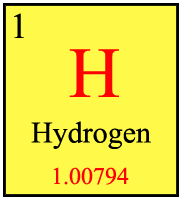Instructional design/Learning objectives/Conditions
< Instructional design < Learning objectives| Instructional Design | ID Learning Objectives | < Back | Page 1 of 4 | Next > |
Introduction
The second component of a well-formed objective is the condition. Simply identifying the performance required from the learner is not enough. We also have to describe the conditions that affect that performance. In this lesson you will learn the definition of conditions and how to clarify the intended performance. Examples and information about what constitutes conditions will help the learner to correctly identify well-written conditions. A self-test will help the learner to remember some of the key concepts from this lesson. Topics include:
- Defining Conditions
- Where Conditions Come From
- Examples and Non-Examples of Condition Phrases
- Conditions Self-Test
Defining Conditions
Once the performance phrase is written for the learning objective, the learner understands what action, or behavior, is required. By including conditions to the objective, instructions are provided to the learner concerning "how" the performance is done. It provides the circumstances, resources, and supervision that the learner is given (or not given) to initiate the behavior. According to Robert Mager, the inclusion of the condition is to prevent misunderstanding. The condition helps clarify the objective so the learner knows what is expected of him/her. In a well-formed objective the condition provides the following:

- It identifies what the learner will be able to use to meet the desired performance.
- Given a periodic table of the elements, the participant will state the atomic number of hydrogen......
- It identifies what the learner will not be able to use to meet the desired performance.
- Without reference to the periodic table of the elements, the participant will be able to state the number of protons in titanium.....
- It identifies the context or environment the performance is accomplished in.
- During a simulation where the laboratory catches on fire, the participant will be able to implement emergency procedures .....
References
Mager, Robert F. (1997) Preparing Instructional Objectives, Atlanta, GA: The Center for Effective Performance.
Navigation
Click Next to continue.
| Instructional Design | ID Learning Objectives | < Back | Page 1 of 4 | Next > |